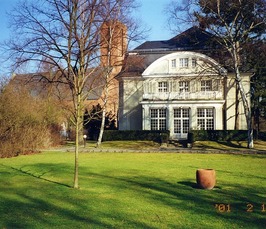Quantum sensor networks as exotic field telescopes for multi-messenger astronomy
- Date: Mar 6, 2020
- Time: 02:30 PM c.t. (Local Time Germany)
- Speaker: Conner Dailey
- University of Nevada at Reno
- Location: Haber-Villa
- Room: Seminar Room
- Host: Molecular Physics
- Contact: jperezri@fhi-berlin.mpg.de

So far, the focus of multi-messenger
astronomy has been the search for conventional signals from known
fundamental forces and standard model particles, like gravitational
waves (GW). In addition to these known effects, quantum sensor networks
could be used to search for astrophysical signals predicted by
beyond-standard-model (BSM) theories. Exotic bosonic fields are
ubiquitous features of BSM theories and appear while seeking to
understand the nature of dark matter and dark energy and solve the
hierarchy and strong CP problems. We consider the case where high-energy
astrophysical events could produce intense bursts of exotic low-mass
fields (ELFs). We propose to expand the toolbox of multi-messenger
astronomy to include networks of precision quantum sensors that by
design are shielded from or insensitive to conventional standard-model
physics signals. We estimate ELF signal amplitudes, delays, rates, and
distances of GW sources to which global networks of atomic magnetometers
and atomic clocks could be sensitive. We find that, indeed, such
precision quantum sensor networks can function as ELF telescopes to
detect signals from sources generating ELF bursts of sufficient
intensity. Thus ELFs, if they exist, could act as additional messengers
for astrophysical events.